
![]()
 Cable Ships In Victoria B.C.
Cable Ships In Victoria B.C.
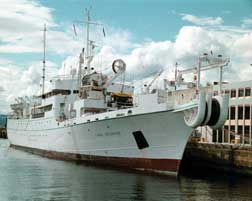 |
Modern communications, including the internet,
depend on submarine cables connecting continents and countries. The communications
are far more secure than anything that is broadcast. Cable ships are designed for laying and repairing submarine cables. They are among the most complex types of merchant ships. They are classified as either a layer or a repairer. The ships crews are highly specialized. Originally the ships were distinguished by a large roller on the bow. Now the rollers are often on the stern especially for the repair ships. The first vessel to lay a submarine cable of any length was the steam tug Goliath in 1850. She was a paddle-wheeler with a large cable drum on deck. One of the best known of the early ships was the Great Eastern. She laid the first Atlantic cable in 1866. The first vessel actually designed for a cable ship was the H.C. Oersted in 1872. |
| Cable Enterprise,370 ft (112.8m) | |
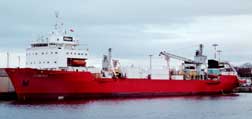 |
Cable ships in Victoria Victoria British Columbia has a history of being a base for cable ships. The Restorer was based in Victoria for some time. In recent years cable ships have been tied up to the outer wharf. These vessels repair the 3 communication cables that run across the Pacific. They are owned and operated by Global Marine with a head office in England. |
| CS Nexus, 491 ft. (149.7m) | |
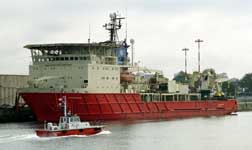 |
A broken cable can cause millions of dollars are to be lost. Many things can break a cable including earthquakes and fishing vessels. While there are not as many problems as there used to be cables still break. As time is money when it comes to getting the broken cables operating again cable ships are stationed in various parts of the world. The 589 ft (149.7m) British ship CS Nexus was stationed in Victoria. Her beam is 81.7 ft. (24.9m) and her draft is 25.6 ft (7.8m). The ship was built as a drill ship in 1972. She was converted to a cable ship in 1993. The cable holds have large circular tanks with cones in the middle for stowing the heavy cable. The cone keeps the center coils of the cable from collapsing into the center. The cable is coiled from the outer side of the tank inward. Dunnage is placed between the layers. |
| Seaspread, 380.6ft. (116.0m) |
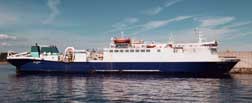 |
She works with deep-sea and
coastal installations. In her cable holds she can stow 7,700 tonnes of
cable. She is equipped with an ROV and equipment for repairing damaged
cables. ROV's are able to retrieve cables down to 200m and some can bury
cable to 0.6m. They can weigh 3.5 British tonnes. She is equipped with
the latest navigation gear and can communicate with Satcom. |
| Wave Venture, 464ft. (141.5m) | |
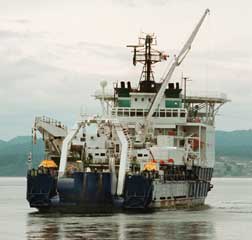 |
Everything on board is accomplished with the aid of computers and video cameras. The control of each operation is done by specialists in their one area. In addition to the normal crew of navigating and engineering officers she has specialty crews that can handle each phase of the operation such as ROV operation and cable splicing. The cable splicing requires a lot of care. After a splice is made it is incased in a protective casing. The repair is tested before the cable is returned to the water. Repeaters are used at various parts of the cable to keep the signal strong. Spare repeaters are kept in a fridge on board until they are used. |
| Seaprite |
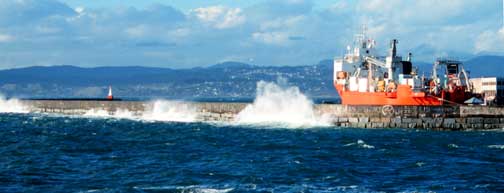
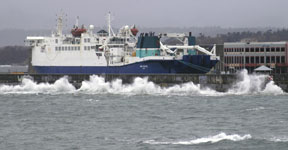 These vessels have been stationed in Victoria B. C., Canada. At times they are replaced by other vessels.
These vessels have been stationed in Victoria B. C., Canada. At times they are replaced by other vessels.